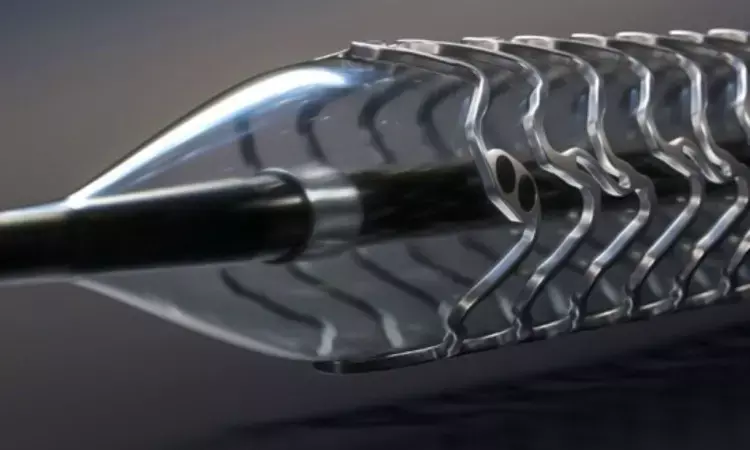- Home
- Medical news & Guidelines
- Anesthesiology
- Cardiology and CTVS
- Critical Care
- Dentistry
- Dermatology
- Diabetes and Endocrinology
- ENT
- Gastroenterology
- Medicine
- Nephrology
- Neurology
- Obstretics-Gynaecology
- Oncology
- Ophthalmology
- Orthopaedics
- Pediatrics-Neonatology
- Psychiatry
- Pulmonology
- Radiology
- Surgery
- Urology
- Laboratory Medicine
- Diet
- Nursing
- Paramedical
- Physiotherapy
- Health news
- Fact Check
- Bone Health Fact Check
- Brain Health Fact Check
- Cancer Related Fact Check
- Child Care Fact Check
- Dental and oral health fact check
- Diabetes and metabolic health fact check
- Diet and Nutrition Fact Check
- Eye and ENT Care Fact Check
- Fitness fact check
- Gut health fact check
- Heart health fact check
- Kidney health fact check
- Medical education fact check
- Men's health fact check
- Respiratory fact check
- Skin and hair care fact check
- Vaccine and Immunization fact check
- Women's health fact check
- AYUSH
- State News
- Andaman and Nicobar Islands
- Andhra Pradesh
- Arunachal Pradesh
- Assam
- Bihar
- Chandigarh
- Chattisgarh
- Dadra and Nagar Haveli
- Daman and Diu
- Delhi
- Goa
- Gujarat
- Haryana
- Himachal Pradesh
- Jammu & Kashmir
- Jharkhand
- Karnataka
- Kerala
- Ladakh
- Lakshadweep
- Madhya Pradesh
- Maharashtra
- Manipur
- Meghalaya
- Mizoram
- Nagaland
- Odisha
- Puducherry
- Punjab
- Rajasthan
- Sikkim
- Tamil Nadu
- Telangana
- Tripura
- Uttar Pradesh
- Uttrakhand
- West Bengal
- Medical Education
- Industry
New resorbable magnesium scaffold promising for coronary lesions: BIOMAG-1 first-in-human study

Germany: The one-year small BIOMAG-1 study results have shown that serial coronary imaging of patients with a resorbable magnesium scaffold (Biotronik's Dreams 3G) for coronary artery disease indicates favourable vessel wall healing based on plaque composition changes.
The findings were published in EuroIntervention and presented at the 2023 European Atherosclerosis Society (EAS) Congress.
"The third-generation bioresorbable magnesium scaffold is clinically effective and safe, making it a possible alternative to drug-eluting stents (DES)," Michael Haude, Medical Clinic I, Rheinland Klinikum Neuss GmbH, Lukaskrankenhaus, Neuss, Germany; and colleagues wrote in their study. On optical coherence tomography, investigators saw a significant decrease in the total lipid area and a significant increase in fibrous tissue in this first-in-human study with the newest-generation bioresorbable scaffold.
The sirolimus-eluting scaffold is made from a proprietary magnesium alloy and has been on the European market in a different form for many years. However, recently it has been redesigned to decrease the strut thickness while increasing the amount of radial force, but resorbing entirely by one year.
DREAMS 3G, the third-generation coronary sirolimus-eluting magnesium scaffold, is a further development of the DREAMS 2G (commercial name Magmaris), which aims to provide performance outcomes comparable to DES. The researchers aimed to assess the performance and safety of this new-generation scaffold in the BIOMAG-I study.
The study was designed as a multicentre, prospective, first-in-human study with clinical and imaging follow-ups scheduled at 6 and 12 months. The clinical follow-up will continue for five years. The researchers enrolled 116 patients (mean age 61 years; 77.8% male) with 117 lesions, with documented silent ischemia, stable or unstable angina, or hemodynamically stable NSTEMI. Most lesions were classified as type B2/C, and just 2.6% were considered moderately or severely calcified.
The study led to the following findings:
- At 12 months, after completion of resorption, in-scaffold late lumen loss was 0.24±0.36 mm.
- The minimum lumen area was 4.95±2.24 mm² by intravascular ultrasound and 4.68±2.32 mm² by optical coherence tomography.
- Three target lesion failures (2.6%) were reported, all clinically driven target lesion revascularisations.
- Cardiac death, target vessel myocardial infarction and definite or probable scaffold thrombosis were absent.
"Data at the end of the resorption period of DREAMS 3G revealed that the third-generation bioresorbable magnesium scaffold is clinically effective and effective, making it a possible alternative to DES," the researchers concluded.
Reference:
The study, "A new resorbable magnesium scaffold for de novo coronary lesions, the DREAMS 3G: one-year results of the BIOMAG-1 first-in-human study," was published in EuroIntervention.
DOI: 10.4244/EIJ-D-23-00326
Dr Kamal Kant Kohli-MBBS, DTCD- a chest specialist with more than 30 years of practice and a flair for writing clinical articles, Dr Kamal Kant Kohli joined Medical Dialogues as a Chief Editor of Medical News. Besides writing articles, as an editor, he proofreads and verifies all the medical content published on Medical Dialogues including those coming from journals, studies,medical conferences,guidelines etc. Email: drkohli@medicaldialogues.in. Contact no. 011-43720751


